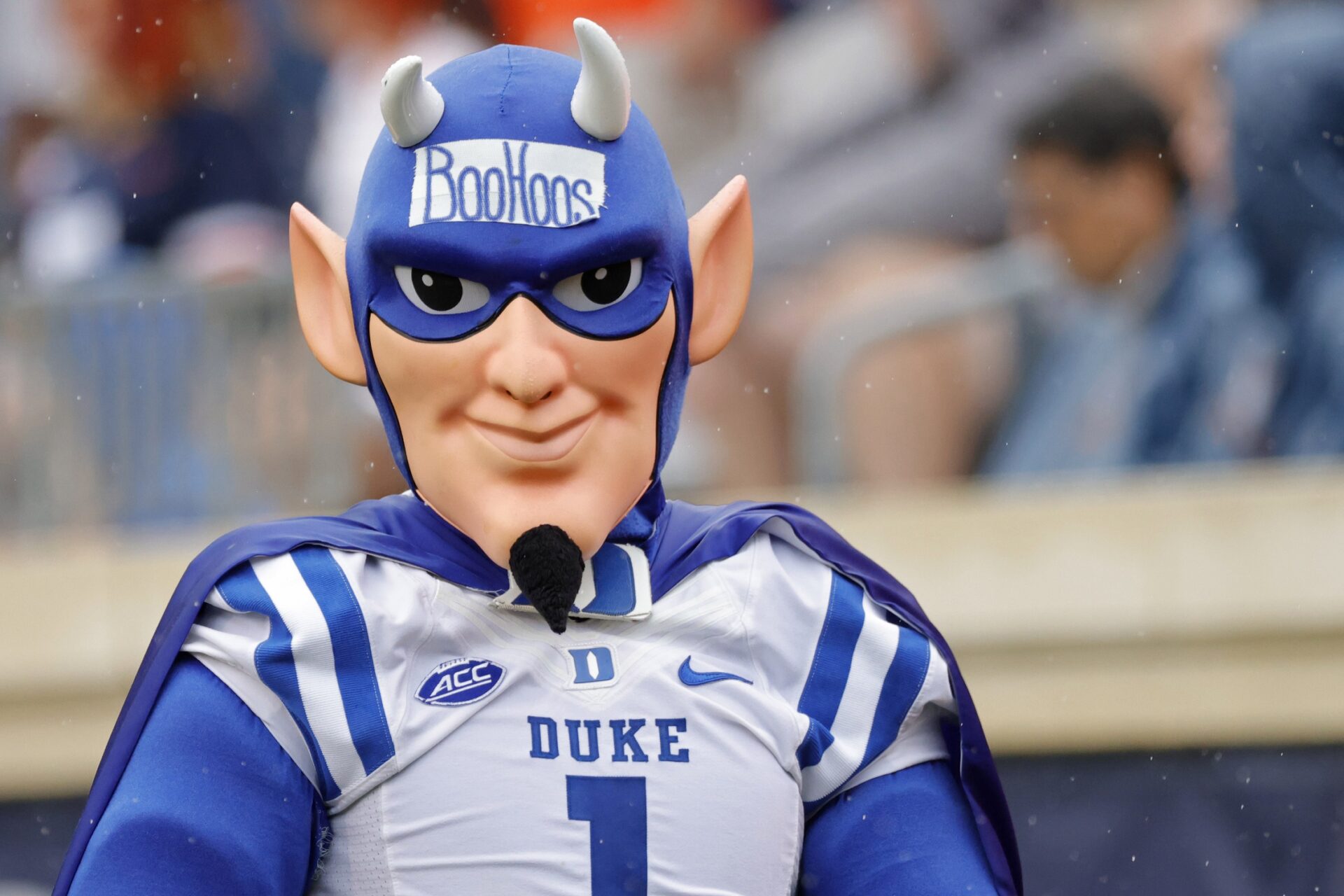The Duke Blue Devils’ college football program has spent the most part of their history living in a hellish shadow cast from the successful basketball program. Despite a name that would suggest otherwise, the Blue Devils’ mascot has a heritage that is less sacrilegious than you’d expect and rooted in military excellence.

Who Is the Duke Blue Devils’ Mascot?
Unlike most college football programs, the Duke mascot doesn’t have a fancy name. He — or she, for it isn’t only men who inhabit the costume — is simply known as Blue Devil.
Although the history of how the program explains the oft-perceived religious connotation of a devil is false, the Blue Devils’ mascot plays into the stereotypical imagery of the devil, with a pair of horns protruding from the blue-masked mascot head.
MORE: ACC QB Rankings 2023 — Ranking the Projected Starting QBs for Next Season
Further playing into that anti-christ imagery, the Blue Devils’ mascot also sports a pointed goatee, similar to the kind seen in traditional depictions of the devil. That’s where the similarities end.
Dressed head to toe in the distinctive blue and white of the university athletic departments, the Duke mascot conjures up a more heroic image than a sacrilegious one. The Blue Devils’ look could be straight out of a Marvel comic, with a flowing cape giving the impression of swooping down to save the day.
Why Is Duke the Blue Devils?
While the distinctive blue and white colors have always been a part of the Duke program — dating back to when they were known as Trinity College — the nickname “Blue Devils” didn’t come into existence until the 1922-1923 academic year.
Prior to that, they were simply known as the Trinity Eleven, the Blue and White, or the Methodists. However, in 1921, a campaign began to find a “catchy name, one of our own possession that would be instantly recognizable nationwide in songs, yells, and publicity.”
A shortlist was drawn up that included the Blue Titans, Blue Eagles, Blue Devils, and Blue Warriors. Unsurprisingly given the negative religious connotations, the Blue Devil didn’t receive a great amount of public support on a Methodist campus.
Yet, it was adopted and widely used from the 1923-1924 school year.
MORE: History of the Boston College Eagles Mascot
Despite being somewhat contentious at the time, the Duke mascot and nickname came from a more wholesome place.
For a sport that lends itself to military language — such as trench warfare or a quarterback dropping bombs downfield — the naming of the Duke Blue Devils after a World War I infantry has something of a poetic synergy.
“Les Diables Bleus” was the nickname given to a group of French soldiers called the Chasseurs Alpins. Their particular brand of training and alpine knowledge gained them infamy, and their courage gained them many accolades.
It doesn’t take much creative imagination to see the similarities between the eye-catching blue uniform and flowing cape of “Les Diables Bleus” and the Duke Blue Devils mascot.

